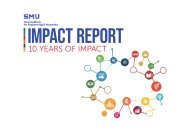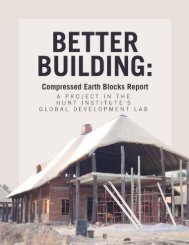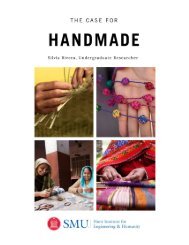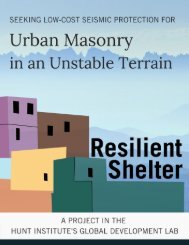Where Engineering & Chemistry Intersect for Broader Impact
Currently, many biodegradable products in the market are bio-based, such as polysaccharides, proteins, and lipids, and are focused on conventional plastic applications. This approach to production of biodegradable plastics, however, is facing mounting challenges due to high cost, weaker performance, and environmental issues. In addition, several biodegradable plastics have proven to break down quickly under specific, simulated environmental conditions, but they may not be effectively degradable under natural conditions. As a result of these challenges and many more, there exists a gap in the market. Our Project Affiliates, Dr. Son and Dr. Krueger, aim to bridge this gap by pursuing a biodegradable plastic that better addresses the aforementioned challenges, investigating a prototype plastic with predictable degradation and mechanical properties. In the spirit of interdisciplinary innovation, they seek to develop a joint chemical and engineering approach to biodegradable plastics for broader impact.
Currently, many biodegradable products in the market are bio-based, such as polysaccharides, proteins, and lipids, and are focused on conventional plastic applications. This approach to production of biodegradable plastics, however, is facing mounting challenges due to high cost, weaker performance, and environmental issues. In addition, several biodegradable plastics have proven to break down quickly under specific, simulated environmental conditions, but they may not be effectively degradable under natural conditions. As a result of these challenges and many more, there exists a gap in the market.
Our Project Affiliates, Dr. Son and Dr. Krueger, aim to bridge this gap by pursuing a biodegradable plastic that better addresses the aforementioned challenges, investigating a prototype plastic with predictable degradation and mechanical properties. In the spirit of interdisciplinary innovation, they seek to develop a joint chemical and engineering approach to biodegradable plastics for broader impact.
Create successful ePaper yourself
Turn your PDF publications into a flip-book with our unique Google optimized e-Paper software.
19<br />
Our Biodegradable Research<br />
As stated in the executive summary, Dr. David Son and Dr. Paul Krueger collaborate<br />
to work on a project with a joint chemical and engineering approach to biodegradable<br />
plastics <strong>for</strong> broader impact.<br />
Both labs per<strong>for</strong>m research on key topics that include modeling the material<br />
properties, experimentally characterizing the properties <strong>for</strong> degradability, and<br />
investigating ways to optimize the chemical <strong>for</strong>mulation to preserve degradability while<br />
achieving desirable mechanical properties. By combining the knowledge of bioresorbable<br />
polymers and novel biopolymers, the product will stand out with unique mechanical<br />
properties, improved total degradation time, and minimal toxicity released back into the<br />
environment.<br />
Dr. David Son Lab<br />
From a chemical point of view, researchers could take several approaches. They can<br />
develop additives <strong>for</strong> conventional mass-produced polymers that initiate degradation on<br />
exposure to certain stimuli such as light, heat, or moisture. Another approach would be<br />
to utilize bio-based plastics and chemically modify them to impart certain desirable<br />
properties to the material. In the third and most desirable approach, researchers can<br />
design plastics from the molecular level to give predictable properties to the final plastic<br />
material.<br />
Previously, the Center <strong>for</strong> Drug Discovery, Design and Delivery (CD4) on the SMU<br />
campus developed possibilities of in vivo types of applications, such as a temporary<br />
structural feature or as a scaffold <strong>for</strong> tissue growth. The Son Lab within the CD4 has been<br />
WHERE ENGINEERING & CHEMISTRY INTERSECT FOR BROADER IMPACT<br />
NGUYEN, KATIE













